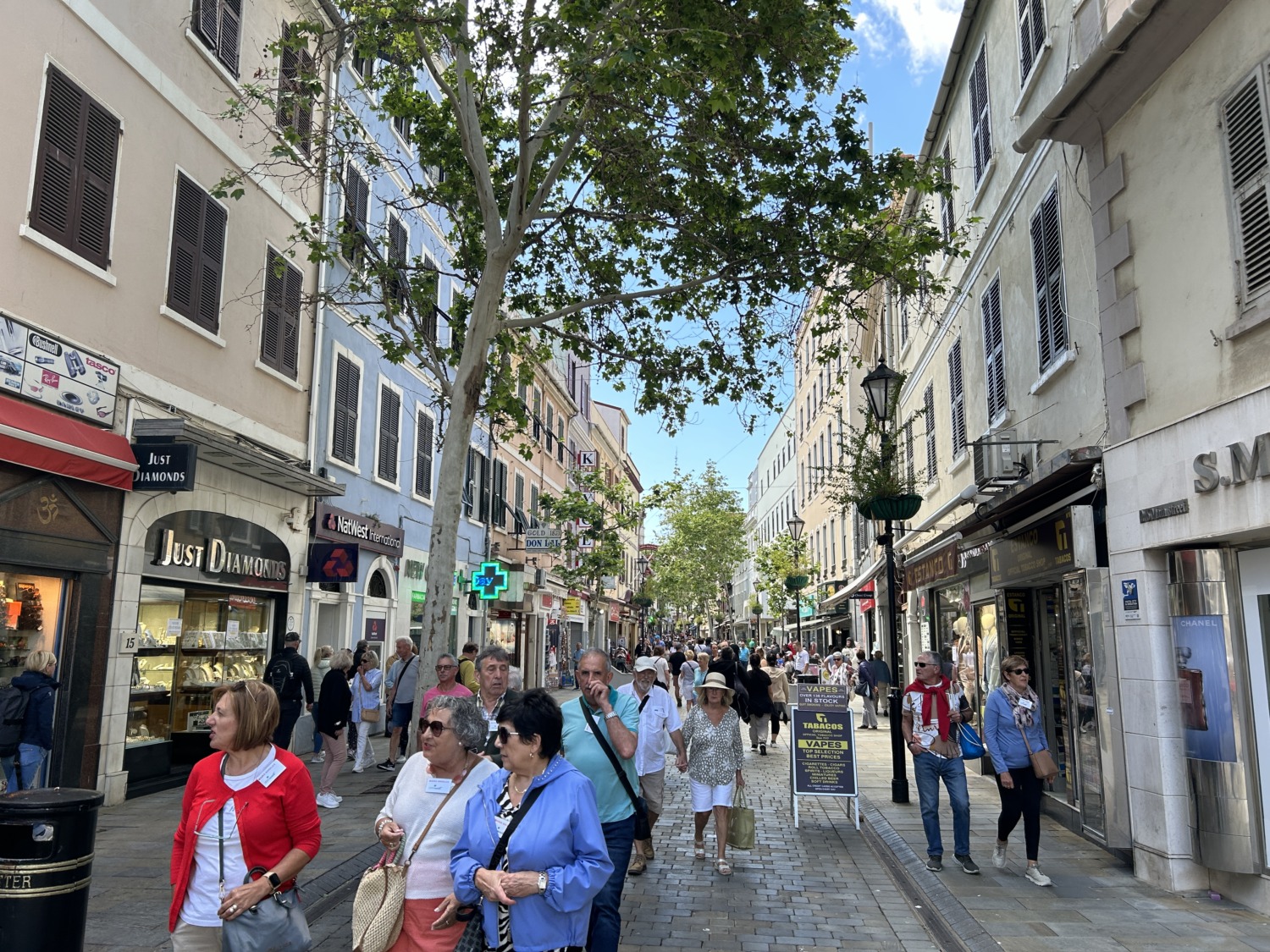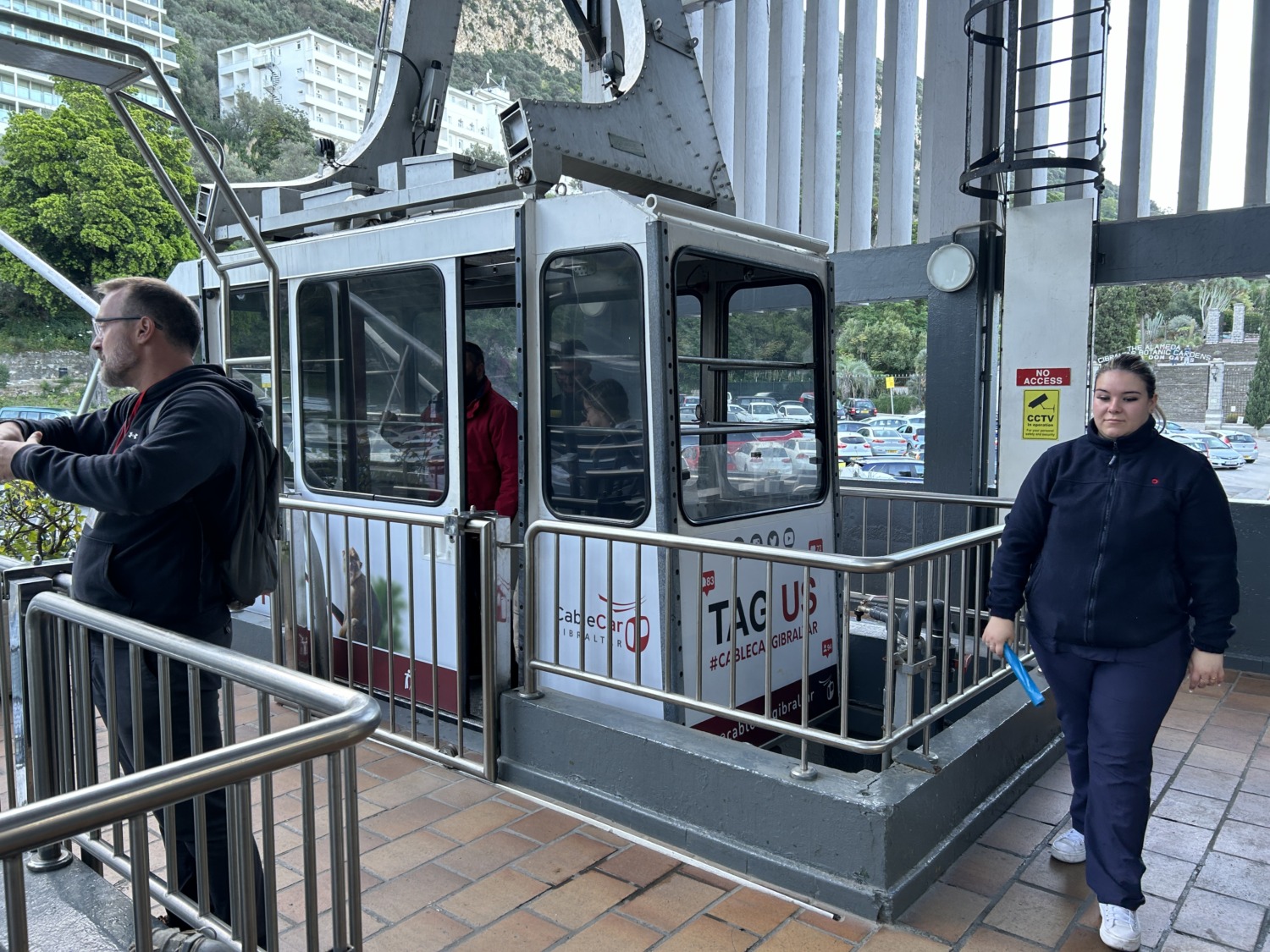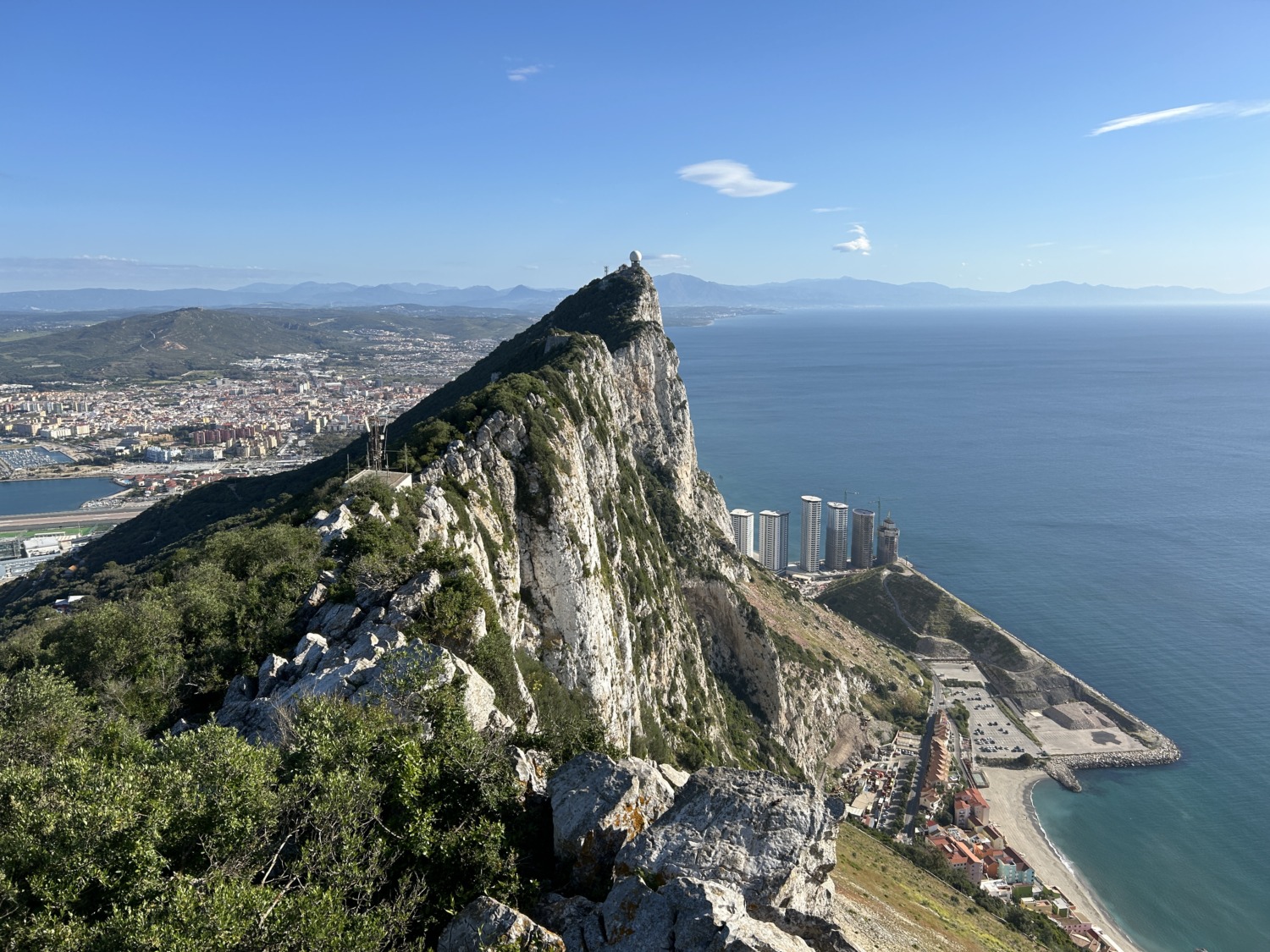Tom has really looked forward to going to Gibraltar, ever since we first looked at this particular cruise possibility. In fact, when I showed him the iternary and suggested going, he was all in, just because of the one port. Gibraltar has enormous strategic importance for the British, and he spends a lot of time as a British soldier. So I guess he identifies with any strong British military base.
Gibraltar is one of those places. The British captured it from the Spanish in 1704. It was ceded to the British by the Treaty of Utrecht in 1713 in perpetuity. That doesn’t mean that other people haven’t tried to take it over. The Spanish are always trying to take it back. Their biggest military attempt was the Great Siege of Gibraltar from 1779 to 1783. Lately, however, their attempts at takeover have been political instead of military. They tried a blockade in the 1980’s that didn’t work. And Spain tried to gain Gibraltar through referendums in 1967 and 2002. Through it all Gibraltar has remained firmly British.
Today, there are 32,000 people living in Gibraltar and it is the fifth most densely populated country in the world. Gibraltar’s economy rests on financial services, e-gaming, tourism and the port. Half of the world’s shipping passes through the Strait of Gibraltar. With one of the world’s lowest unemployment rates, the largest part of the labour force cross over the border every day from Spain or Morocco.
Because there were so many things we wanted to see in Gibraltar, we took a shore excursion from the ship. Shore excursions leave earlier and get preference with transportation in a port. We climbed aboard a small bus – all the roads are very narrow with lots of twists and turns. Our guide was Stewart, who has lived all his life in Gibraltar except for the years he went to University in Great Britain. Our driver was Effy and she was particularly skilled at maneuvering through the traffic. When we were on the rock, we had some really tight squeezes where she got through by inches and earned applause from all the passengers.
Our first stop was the Gibraltar Cable Car to take us up to the top of the Rock. The peak of the Rock is 1,398 feet high with a sheer cliff on one side and slightly gentler slope on the other. The mountain is made of shale, limestone, and sandstone, which means it is pocked with natural caves and tunnels, some of which might connect to Africa. The cable car moved our whole group up the mountain very swiftly.
Once at the top, Stewart gave us plenty of time to look around, answering questions and pointing out what we could see. We could clearly see Morocco on the other side of the straight, and Spain all around to the north, east, and west. The airport runway (just one) separates Gibraltar from Spain.
After snapping lots of pictures and admiring the view, Stewart led us down a path to the Apes’ Den. The Barbary Macaques are the only wild monkeys in Europe. They are native to Morocco and Algeria but have been in Gibraltar for a very long time. They might have been brought to Gibraltar by African traders and some speculate they migrated via the tunnels and caves. There are currently about 300 monkeys on Gibraltar and they are well cared for by the goverment.
We had been warned, repeatedly not to wear anything shiny and not to take any food. Because we were careful, the monkeys left us alone. We did see them climbing on one man who had some food, but they pretty much ignored us and got on with their lives. We watched mothers grooming babies and youthful monkeys playing. Stewart explained that the monkeys are very territorial and that family groups all have their babies within days of each other so that the babies all grow up together.

After the Apes’ Den, we walked thorugh St. Michael’s Cave. There were some pretty spectacular formations, but there was a light and sound show going on all the time. The most impressive effect was the lights shining on a couple of formations that looked like wings. When the light shown on it just right, it looked like a huge, heavenly angel. People have used this cave constantly since the 1700’s, so it isn’t a living cave anymore.
After St. Michael’s Cave, we climbed aboard our bus for a ride part way down the mountain to the World War II Tunnels. We were supposed to see the Great Siege Tunnels from the 1700’s, but the power was out in the tunnels. Instead, all the tourists on the mountain converged at the World War II Tunnels. There was plenty of room inside the tunnels, but the tiny parking space outside was crazy. Imagine a one-lane road with a mountain on one side and cliff on the other. Then a 180 switchback with 20 small buses parked, blocking the turn. This is where Effy showed what a professional she was as she got our bus out of an impossibly tight space and around other buses.
The World War II Tunnels were interesting. Gibraltar was a very important military base for the British to hold during World War II. The military presence needed all the space. Consequently all the civilians living in Gibraltar were evacuated to Spain or Great Britain. Some of them didn’t make it back to Gibraltar until 1951, and there is a statue in town commemorating their sacrifice.
After our morning on the Rock, we headed back to the lower part of Gibraltar, passing through the historic Old Town. Stewart pointed out military barracks, schools, officers quarters, and the walls around the lower part of town. The newer part of town is all reclaimed land and has skyscrapers and most of the apartments where residents live. Stewart explained that your housing cost is based on your salary. Housing is so expensive that it is subsidized by the government on a sliding scale. The only housing available to people who aren’t Gibraltarians costs millions of dollars.

Tom and I got off the bus at Casemates Square, the main shopping area of Gibraltar. This was the first place that we wanted to get some souvenirs for our family. There were plenty of souvenir shops, as well as restaurants, craft booths, and jewelry shops. Gibraltar is all duty-free so it is a good place to pick up high-end items. After finding the souvenirs, we sat down for a light lunch at the Gibraltar Bakery. They had Cornish Pasties that were very good. Beef and onion in a flaky and chewy crust. Although Gibraltar uses the Gibraltar pound as its form of money, they also accept the British pound. We paid for everything with our universal Visa card.

Our visit to Gibraltar was too short. Tom and I reluctantly got back on the boat just in time for last call. We wanted to go to the Gibraltar Museum and Princess Caroline Battery. Tom was also hoping to find a bookstore with some local history books, but there weren’t any bookstores in the main shopping area. We would have liked to spend more time hiking up in the Nature Preserve on the top of the Rock.
Gibraltar deserves more than one day. Hopefull, someday, we will be able to come back and do some of the things we missed this time.









